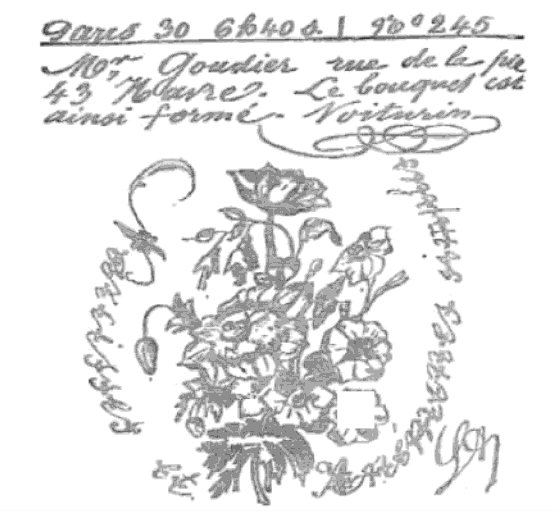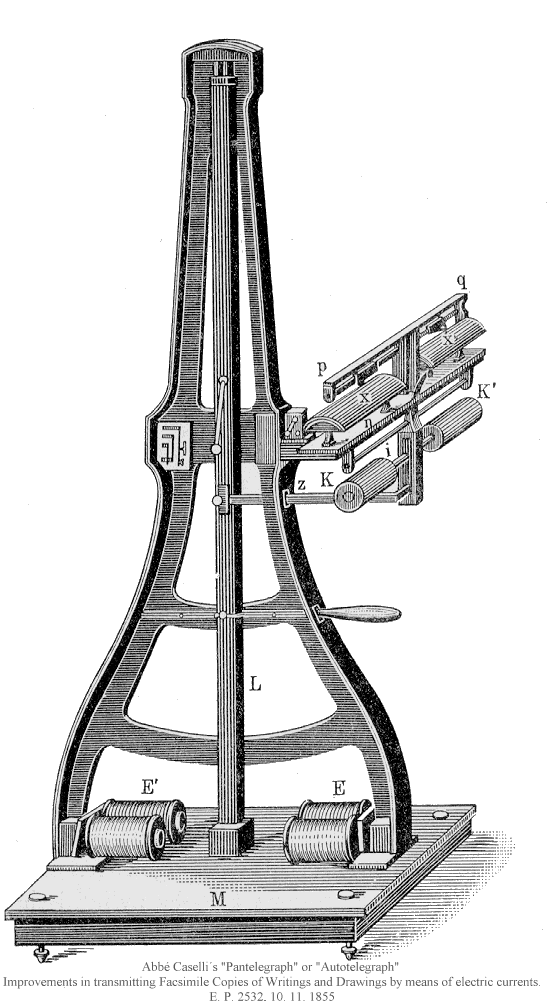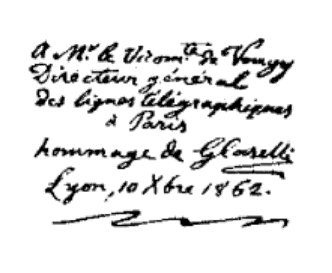Just the Fax: Why 43 Million Machines Still Refuse to Die
How a 180-year-old technology continues to send 17 billion messages annually, and why every prediction of its death has been hilariously wrong
Okay, picture this: You’re some tech pundit back in 1998, probably wearing khakis and feeling pretty smart about yourself, confidently telling everyone that email will completely kill fax machines within five years. “Who needs those screeching, paper-wasting relics when you can send documents instantly via the internet?”
Fast forward to 2025, and somewhere in the world right now, a fax machine is whirring to life, adding to the 17 billion faxes sent annually across 43-46 million machines that stubbornly refuse to become obsolete.
Yeah, you read that right. 17 BILLION. In 2025.
Welcome to the absolutely wild story of the fax machine. This thing is so resilient it makes cockroaches look fragile. Not only did it survive the digital revolution, it’s actually thriving in ways that would make its 19th-century inventors lose their minds.
Wait, Fax is Older Than the Telephone?! (Yes, Really)
Here’s a fact that’s gonna blow your brain: fax technology is older than the telephone.
I’m not kidding. While Alexander Graham Bell was still figuring out how to make voices travel through wires, this Scottish dude named Alexander Bain had already patented the “Electric Printing Telegraph” in 1843. This was a crude but totally functional system for sending images over wire.
 Alexander Bain’s revolutionary “Electric Printing Telegraph” - the world’s first fax machine, invented 33 years before the telephone
Alexander Bain’s revolutionary “Electric Printing Telegraph” - the world’s first fax machine, invented 33 years before the telephone
Let me repeat that: 33 years before Bell’s telephone patent, we had fax machines.
This wasn’t just some random historical footnote either. Bain’s device could sync up two pendulums to scan and reproduce messages line by line. Basically, he built the world’s first fax machine while most people were still getting around on horses.
The Real MVP: Giovanni Caselli’s Pantelegraph (1865)
By 1865, this Italian physicist Giovanni Caselli had built the Pantelegraph, which was the first commercially successful fax system. This beast could transmit images up to 800 kilometers across telegraph wires.
 Caselli’s Pantelegraph, circa 1861 - the world’s first practical fax machine
Caselli’s Pantelegraph, circa 1861 - the world’s first practical fax machine
Get this: it was so successful that it was sending handwritten messages between major European cities while most people were still figuring out how to use a telegraph. We’re talking about fax networks in the 1860s!
The timeline gets even crazier:
- 1880: Shelford Bidwell invented scanning phototelegraphy
- 1888: Elisha Gray’s Telautograph sent handwritten notes over long distances
- 1902: Arthur Korn revolutionized newspapers with photo transmission
- 1924: AT&T added pictures to phone lines; RCA made it wireless
- 1964: Xerox’s LDX became the first “modern” commercial fax machine
 Shelford Bidwell’s scanning phototelegraphy apparatus from 1880 - another leap forward in image transmission
Shelford Bidwell’s scanning phototelegraphy apparatus from 1880 - another leap forward in image transmission
 Arthur Korn’s Bildtelegraph revolutionized newspaper photo transmission in 1902
Arthur Korn’s Bildtelegraph revolutionized newspaper photo transmission in 1902
 Elisha Gray’s Telautograph from 1888 - transmitting handwritten notes over long distances
Elisha Gray’s Telautograph from 1888 - transmitting handwritten notes over long distances
 Technical diagram of the Pantelegraph from 1855 - notice the intricate pendulum mechanism
Technical diagram of the Pantelegraph from 1855 - notice the intricate pendulum mechanism
So while everyone thinks fax is some ancient relic, it’s actually one of humanity’s earliest forms of electronic communication. This technology helped build the foundation for our entire connected world. Pretty wild, right?
 An actual historic transmission from 1862 - proof that people were “faxing” before your great-great-grandparents were born
An actual historic transmission from 1862 - proof that people were “faxing” before your great-great-grandparents were born
Fax at Sea: The Original Emergency Communication
One of the coolest applications of fax was on ships. Think about it: you’re hundreds of miles from the nearest anything, and you need weather info to not die in a storm.
Enter radiofax (or “weatherfax”): a system that broadcasts weather charts via high-frequency radio waves to ships anywhere on the ocean. They started experimenting with this in 1926, and it became absolutely crucial for maritime safety.
 Marine weatherfax equipment - still essential for ships worldwide, nearly a century after its introduction
Marine weatherfax equipment - still essential for ships worldwide, nearly a century after its introduction
Even today, when ships have satellite internet and GPS, radiofax weather maps are still super popular as backup. Why? Because when you’re in the middle of the Pacific and there’s a storm brewing, you want every possible source of weather data. And fax has been rock-solid reliable for nearly a century.
The Weird Science Behind Those Screeching Sounds
Ever wonder what the hell those bizarre screeching sounds are when a fax connects? They’re not random noise. They’re actually this intricate digital handshake happening.
Here’s the magic:
The Scanning Process
Modern fax machines use a Charge-Coupled Device (CCD) scanner with hundreds of tiny photosensors. These sensors blast your document with light and detect what bounces back:
- Black areas absorb light → low voltage signal
- White areas reflect light → high voltage signal
This creates a continuous analog signal that gets converted into a bitmap. It’s basically a grid of black and white pixels at 204 horizontal × 98 vertical dots per inch.
The “Handshake Tones”
Those characteristic screeching sounds? That’s the modems in both machines having a conversation:
- Establishing connection (“Hello, are you a fax machine?”)
- Negotiating transmission speed (“What’s the fastest we can go?”)
- Synchronizing the process (“Ready to receive!”)
The Transmission Magic
The bitmap gets converted into audio-frequency tones. Different tones represent black or white pixels. These tones travel over regular phone lines, where the receiving machine’s modem converts them back into the original image.
Modern fax machines use crazy sophisticated data compression (Modified Huffman, Modified READ) to squeeze out redundant info like long stretches of white space, which speeds everything up dramatically.
It’s basically early digital image transmission. This tech was sending pictures over phone lines decades before the internet existed. Pretty badass when you think about it.
The Dark Side: Security Exploits and Prison Breaks
Despite everyone thinking fax is this secure, “off-internet” thing, it’s got its own unique vulnerabilities that are honestly kind of terrifying.
The “Faxploit” Attack (2018)
Check Point Research found this absolutely insane vulnerability they called “Faxploit”. Attackers could hack entire corporate networks using nothing more than a fax number (which is usually right there on business cards).
Here’s how bonkers this was:
- Embed malicious code in an image file
- Send via fax to the target machine
- When the fax machine decodes the image, the malware executes
- Gain control of the machine and potentially the entire network
The scary part? This worked on tens of millions of fax machines worldwide, including modern multi-function printers with fax capability.
The Prison Escape Fax
Here’s a wild one: an inmate in a Turkish prison reportedly used a phony court order sent via fax to get himself released. This shows the crazy implicit trust people have in faxed documents: if it came through official channels, it must be legit, right?
Traditional Vulnerabilities
- No encryption on analog phone lines (super easy to intercept)
- Stack overflow exploits in fax protocols
- Human error: sending to wrong numbers, leaving sensitive docs in public trays
Why Email Didn’t Kill the Fax Star
In the ’90s and 2000s, every tech expert was absolutely certain fax would die within years. Email was faster, cheaper, way more versatile. Why would anyone stick with those paper-wasting noise machines?
They were so hilariously wrong. Here’s why:
Legal and Regulatory Inertia
Lots of industries operate under regulations written back when fax machines were cutting-edge:
- Healthcare: HIPAA compliance often requires secure, auditable transmission of patient data. Over 70% of US hospitals still rely on fax for this stuff.
- Legal: Courts and law firms need documents with verifiable signatures and timestamps. Faxed contracts are legally recognized in many places where electronic signatures might not cut it.
- Finance: Banks use fax for loan applications and credit reports to comply with regulations like Gramm-Leach-Bliley Act and Sarbanes-Oxley.
The “Network Effect”
The sheer number of existing fax machines created this network effect. Businesses had to keep fax capability to talk to clients and partners who still used them. Same reason we still support “legacy” systems in tech.
Perceived Security
While not bulletproof (as Faxploit proved), traditional fax felt way more secure than early email:
- Dedicated phone lines seemed harder to intercept than internet traffic
- Physical documents gave you tangible proof of transmission
- No spam filters to worry about: your fax would definitely arrive
Universal Interoperability
The Group 3 fax standard from 1980 meant virtually any fax machine could talk to any other. This gave a level of seamless compatibility that early email systems couldn’t touch.
Fax by the Numbers: Still Very Much Alive
The stats are genuinely mind-blowing:
- 43-46 million fax machines still operating worldwide
- 17 billion faxes sent annually (and growing!)
- 70% of US hospitals use fax regularly
- 8,000-9,000 fax machines active in the UK’s NHS alone
- 11% annual growth in global fax services market (2022-2027)
Geographic Hotspots
Japan is the ultimate fax holdout, where the technology is deeply embedded in business culture. Reasons include:
- Cultural preference for tangible documentation
- Perceived security advantages
- Kanji compatibility: fax handled complex Japanese characters way better than early digital text formats
- Government resistance: Japanese officials faced serious pushback when trying to reduce fax reliance
 The first “pantelegram” sent from Paris to Lyon on February 10, 1862 - this is what 160+ year old fax technology actually looked like
The first “pantelegram” sent from Paris to Lyon on February 10, 1862 - this is what 160+ year old fax technology actually looked like
Fax as Art: When David Hockney Went Full Send
Perhaps the most unexpected chapter in fax history is when artists embraced these machines as creative tools. From the late ’70s through the ’90s, artists used fax machines for expression, collaboration, and cultural commentary.
Want the full story? Check out our dedicated deep dive: David Hockney’s Fax Art Revolution: When Artists Hijacked the Office Machine
The “Fax Art” Movement
Artists discovered that fax machines’ technical limitations (low resolution, distortion, visual noise) could be turned into deliberate aesthetic features. This created a unique “graphic language of poor images” that was totally unique to the medium.
David Hockney, one of the most famous artists to go all-in on fax art, extensively used these machines in the late ’80s and early ’90s. He even participated in the 1989 São Paulo Biennial “via fax” and called the machine “the wonderful machine, the enemy of totalitarianism, the return of handwritten letters.”
Office “Faxlore”
Before internet memes, there was “faxlore”: anonymous workplace humor including poetry, collages, and cartoons that got photocopied and faxed around offices. These were the original “viral” office content, spreading critiques of corporate life through the very infrastructure companies provided.
Urban Legend Transmission
Fax machines became highways for spreading urban legends and hoaxes, like the infamous 1993 “lights out” gang initiation warning that flooded fax machines in Memphis. These messages looked like they came from official sources, giving wild claims an air of authority. Basically a preview of how misinformation spreads online today.
The “Fax is Dead” Hall of Fame
The predictions of fax death are genuinely hilarious in hindsight:
Late ’90s/Early 2000s: The Dot-Com Boom Predictions
- “The fax machine is an endangered species”
- “Email will completely eliminate the need for faxes within five years”
- “Why would anyone still use fax when the internet exists?”
What They Totally Missed
These confident predictions failed to account for:
- Regulatory compliance requirements in major industries
- Cultural entrenchment in business processes
- Legal framework inertia: laws written with fax in mind
- The rise of online fax services that kept functionality without physical machines
The Ironic Reality
While pundits declared fax dead, the technology just evolved. Modern “online fax” or “e-fax” services bridge the gap between legacy systems and the digital world, letting fax functionality persist and even grow without needing actual physical machines.
The Resilience Lesson
The fax machine’s story teaches us something fascinating about tech resilience. Pure technical superiority doesn’t guarantee adoption or elimination. Tech adoption gets driven by:
- Legal and regulatory frameworks
- Cultural habits and preferences
- Industry-specific needs
- Network effects and interoperability
- Perceived (not just actual) security
Fax didn’t succeed because it was the best technology. It succeeded because it solved specific problems for specific communities in ways that newer tech couldn’t easily replicate.
The Fax of the Future
Today’s fax landscape looks totally different from those screeching machines of the ’80s:
- Cloud-based fax services handle millions of transmissions without any physical hardware
- Mobile fax apps let you send documents from your smartphone
- API integrations connect fax functionality to modern business software
- Enhanced security features address traditional vulnerabilities
- Environmental benefits through digital fax reduce paper waste
Conclusion: Long Live the (Digital) Fax
The fax machine’s journey from Alexander Bain’s 1843 “Electric Printing Telegraph” to today’s cloud-based transmission services shows the staying power of actually useful technology. While the whirring and screeching of physical machines might become rare, the core concept of fax (secure, reliable document transmission) keeps evolving.
So next time someone confidently predicts the death of some “obsolete” technology, remember the fax machine. Sometimes the most persistent technologies aren’t the flashiest or newest. They’re the ones that solve real problems for real people, even if they do it with a bit of screeching and the occasional urban legend.
After all, in a world where 17 billion faxes still get sent annually, maybe it’s time to stop calling it a relic and start recognizing it as one of humanity’s most enduring communication innovations.
The fax machine: still here, still screeching, still proving the pundits wrong.
Want to learn more about technology that refuses to die? Check out our other posts on vintage computing and retro communication systems